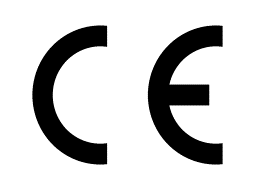 General General
This
information leaflet is intended for manufacturers of machines covered by
the Machinery Directive (98/37/EC).
The
directive defines a machine as being:
".. an assembly of interconnected parts, at least one of
which is able to move, serving a specific purpose .."
The
definition also includes:
".. assemblies of several machines with connected functions,
a removable attachment which alters the function of the machine, which
is connected to the machine by the operator himself, and which is not a
spare part or an engine .." and
".. separately marketed safety components whose malfunction
could endanger people or the environment .."
What is
covered by the directive?
The
scope of the definitions above is comprehensive. However, the directive
excludes a number of specific product-categories:
-
elevators
for persons
-
human-powered
machines
-
medical
machines which come into direct contact with patients
-
fairground
machines
-
steam
boilers and pressure vessels
-
machines
with nuclear applications, defects to which could lead to releases
of radioactivity
-
sources
of radioactivity built into machines
-
firearms
-
containers
and pipe-work for the storage and transportation of inflammable
liquids and dangerous substances
-
vehicles
for the conveyance of people by air, road, rail or inland waterway,
except where used in the mining industry
-
ocean-going
vessels and mobile offshore units
-
cable
systems for the conveyance of people
-
certain
categories of agricultural and forestry tractors
-
military
machines and machines for the maintenance of order
Most
of the above mentioned product categories are covered by specific
EU-directives. Where the safety of an appliance is regulated by another
specific directive, the Machinery Directive will cease to apply, or will
be applicable only for the typical aspects of the appliance having
moving parts.
For
example: if risks associated with a machine are also of an electrical
nature, the Low Voltage Directive is applicable. Many harmonized
standards on low voltage equipment are assigned to the Low Voltage
Directive. These standards also contain requirements concerning hazards
caused by the moving parts of the equipment. Basically the Machinery
Directive remains applicable; however, compliance with a harmonized
standard may indicate compliance with the Low Voltage as well as the
Machinery Directive.
Where,
for machinery, the risks are mainly of electric origin, such machinery
shall be covered exclusively by the Low Voltage Directive.
Machines
constructed for private use are also subject to essential requirements
and CE marking.
Conformity
Assessment Modules
In
principle Module A applies. However, the Machinery Directive identifies
a number of machine-categories comprising those with a high safety risk
and a number of safety components. For these products Module Ba applies.
Module B requires the involvement of a "Notified Body".
Products
for which Module B, applies include:
-
wood
and meat processing machines, such as circular saws, sawing
machines, surface planning machines, single-sided planning machines,
band saws, tenoning machines, milling machines, portable chain-saws,
-
presses
and press brakes for cold metal processing
-
machines
for injection moulding and pressing plastics
-
machines
for injection moulding and pressing rubber
-
machines
for underground work
-
garbage
vehicles fitted with presses
-
protection
systems and removable power take-off for transmitting power
-
garage
lifts for vehicles
-
devices
for lifting persons with falling risk of more than 3 meters.
The
following products also come within the scope of the Machinery
Directive:
-
electro
sensitive devices for detecting the presence of people (optical
devices, sensor mats, etc.)
-
logical
units for two-hand operation
-
automatic
guards for the above-mentioned machines
A
purchaser who modifies, completes or assembles a machine is, under the
terms of the Machinery Directive, a manufacturer and therefore
responsible for compilation of the Technical Construction File,
conformity with the essential requirements of the directive, drawing up
the Declaration of Conformity and applying or reapplying the CE marking.
When did the
directive come into force?
The
Machinery Directive has come into force on January 1st, 1993, after
which there has been a two-year transition period. Starting January 1st,
1995, CE marking on machines is mandatory.
Information
For
further information please contact:
CEBEC
Avenue. Fr. Van Kalken 9A, b. 1
B-1070 Brussels (Belgium)
Phone: +32 2 556 00 20
Fax: +32 2 556 00 36
CEBEC provides market access
|
